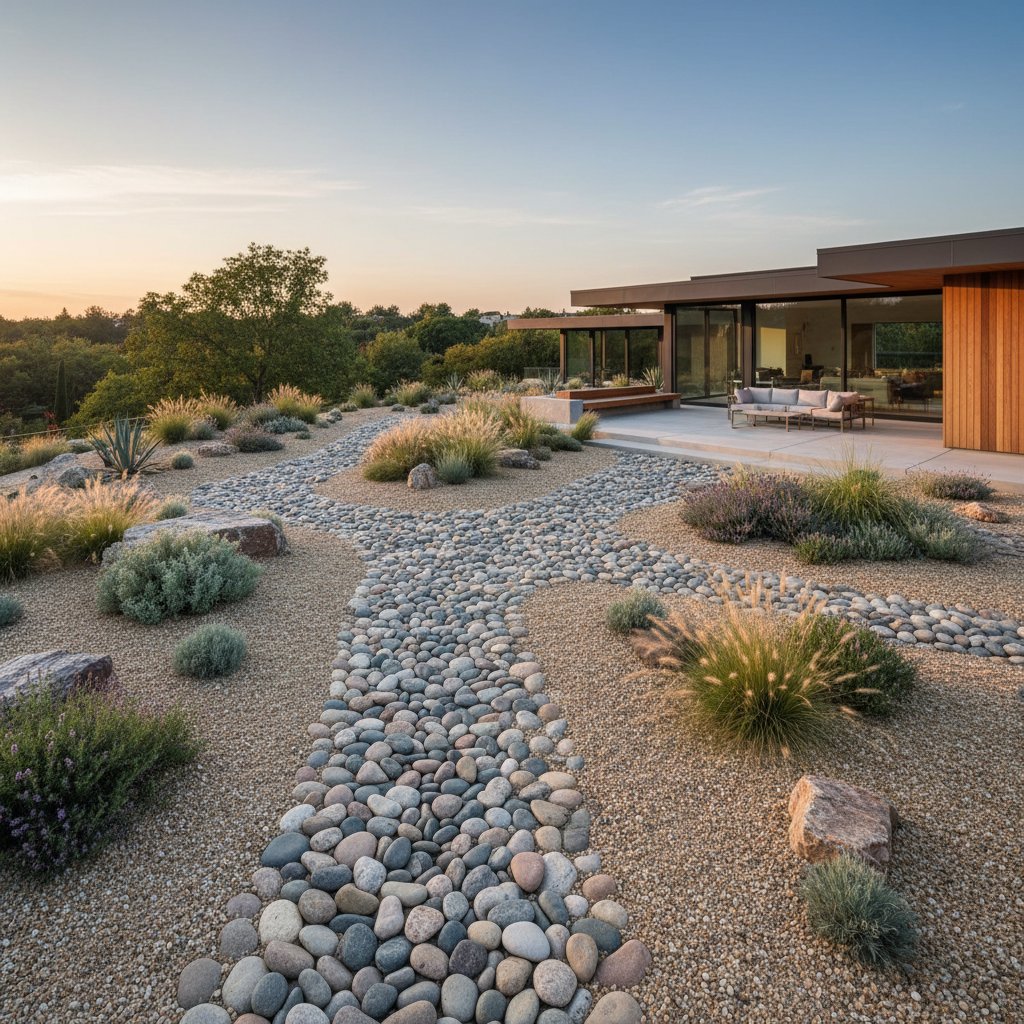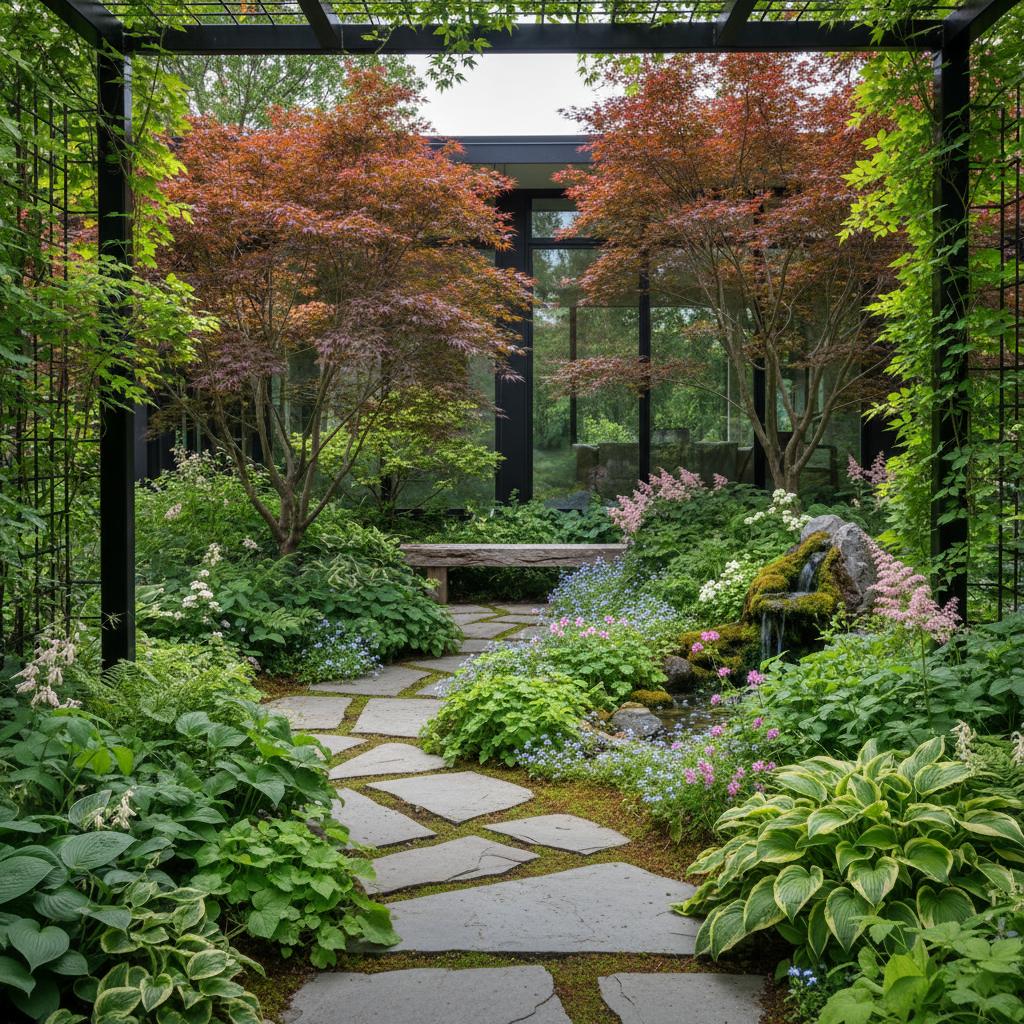Gravel Gardens: Embracing the 2025 Shift to No-Mow Landscapes
Gardens reflect our relationship with nature, evolving to meet modern demands for sustainability and ease. Picture a backyard where sunlight filters through drought-tolerant perennials onto a bed of smooth pebbles, with no need for weekly lawn care. This scene highlights the appeal of gravel gardens, which prioritize low water use and minimal effort while delivering enduring beauty.
Homeowners increasingly turn to gravel gardens amid rising concerns over water conservation and time constraints. These designs move beyond traditional turf, incorporating stone mulches and resilient plants that require little intervention. The result is a landscape that thrives with neglect, allowing more time for enjoyment than upkeep.
Core Principles of Gravel Garden Design
A gravel garden substitutes grass with aggregated stones and select vegetation suited to arid conditions. The gravel layer, typically 2 to 4 inches deep, suppresses weeds, retains soil moisture, and provides a clean, reflective surface that reduces evaporation. Plants like lavender, sedum, and yarrow anchor the design, their roots accessing water efficiently without surface irrigation.
This concept draws from xeriscaping principles, emphasizing efficiency in water-scarce regions. Beauty arises from contrast: the static gleam of stones against the subtle movement of foliage. To succeed, select gravel sizes from 1/4-inch pea gravel for paths to 3/4-inch crushed rock for broader areas, ensuring stability and aesthetic cohesion.
Exploring Styles for Every Aesthetic
Gravel gardens adapt to diverse tastes through material and plant selections, creating unified yet personalized spaces.
- Rustic Meadow Style: Use multicolored river rocks alongside native bunchgrasses like little bluestem and wildflowers such as black-eyed Susan. This informal layout suits cottage homes, mimicking natural prairies with soft edges and seasonal color shifts.
- Contemporary Minimalist: Opt for uniform gray basalt gravel with structured accents like agave or yucca in raised beds. Clean lines and sparse planting evoke modern serenity, ideal for urban settings where space is limited.
- Mediterranean Charm: Incorporate terracotta-hued decomposed granite with herbs like rosemary, thyme, and olive trees. Winding paths and terraced levels add depth, evoking sun-drenched European villas.
Unity comes from repetition: echo a dominant gravel tone or plant motif throughout. For instance, threading lavender borders across sections ties the garden together, preventing a disjointed appearance.
Step-by-Step Guide to Installation
Creating a gravel garden begins with site assessment and preparation to ensure longevity. Test soil drainage by digging a 12-inch hole and filling it with water; if it drains within two hours, proceed. Remove sod using a sod cutter or manual edging tool, then amend heavy clay soils with sand or compost to improve permeability.
Install a landscape fabric barrier only if weed pressure is high, as it can hinder beneficial insect activity. Spread gravel evenly, compacting it lightly with a tamper for even coverage. When planting, space drought-tolerant species 12 to 24 inches apart based on mature size, mulching around bases with additional gravel to conserve moisture.
Initial watering focuses on root establishment: provide deep soaks every three to five days for the first season, then taper to monthly or as needed. Monitor for pests like aphids on new growth, treating with neem oil sprays if necessary. This preparation yields a garden that stabilizes within one year, demanding far less than turf equivalents.
Daily Life and Ongoing Care in a Gravel Garden
Adopting a gravel garden alters routines, freeing weekends from mower noise and irrigation schedules. Observe how dew lingers on stone surfaces or how pollinators flock to blooming salvia, fostering a deeper appreciation for natural cycles. Maintenance involves occasional tasks: rake debris quarterly, divide overcrowded perennials every two years, and refresh gravel paths annually to maintain vibrancy.
These gardens excel in challenging climates, from arid Southwest deserts to temperate zones with summer droughts. They cut water bills significantly, with studies showing up to 75 percent savings compared to lawns. Beyond practicality, they support biodiversity by providing habitats for ground-nesting bees and butterflies.
Scaling Up: From Trial to Full Transformation
Begin your gravel garden journey modestly to build familiarity. Convert a 10-by-10-foot strip along a fence, sourcing materials from local suppliers for climate-appropriate options. Track changes over months: note how the space cools microclimates or enhances curb appeal.
As you gain experience, integrate features like gravel seating areas or rain gardens that capture runoff. Consult regional plant lists from extension services to select non-invasive species. This iterative approach ensures the garden evolves with your needs, blending functionality with aesthetic pleasure.
Benefits That Last: Why Gravel Gardens Endure
Gravel gardens offer lasting value through resilience and simplicity. They withstand foot traffic better than sod, resist erosion on slopes, and require no fertilizers or pesticides once established. Homeowners report reduced stress from upkeep, with more opportunities for outdoor relaxation.
Ultimately, this landscaping choice aligns with broader environmental goals, conserving resources while enhancing property worth. Each element, from stone to stem, contributes to a space that feels intentional and alive, inviting you to engage with nature on its terms.



